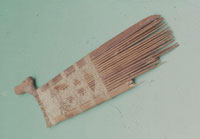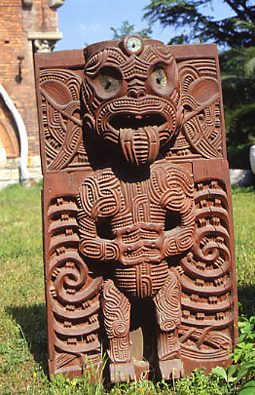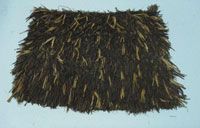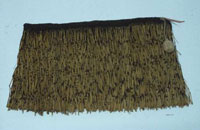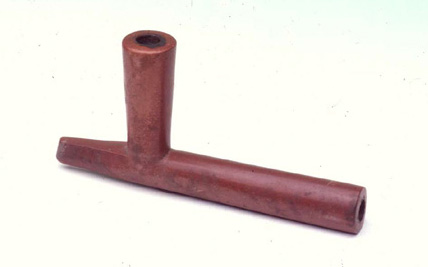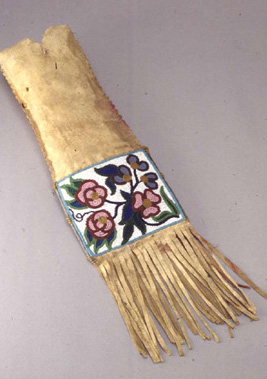Si utilizzavano due strisce rettangolari, frangiate sull'estremità inferiore, di pelle conciata di cervide o di bisonte. Per la conciatura la pelle veniva tesa su dei pioli e con un raschiatoio si eliminavano residui di carne e cartilagini, quindi veniva lasciata stesa al sole ad asciugare per parecchi giorni. A questo punto la pelle veniva capovolta per rimuovere il pelo, tenuta a mollo e strofinata con una mistura di grassi animali per ammorbidirla. dopo averla lasciata nuovamente ad asciugare, veniva stirata e lavorata sulle due facce con una correggia ritorta di cuoio grezzo. I due pezzi di pelle venivano cuciti insieme e una o entrambe le superfici della borsa venivano decorate con applicazioni di aculei di porcospino, che venivano divisi a seconda della misura, ammorbiditi in bocca e, presso alcune tribù, venivano spaccati; quindi erano appiattiti con i denti o con le unghie. In un periodo più tardo, in seguito al contatto e ai conseguenti commerci con gli europei, gli aculei furono sostituiti con conterie di vetro policrome che formavano vari motivi decorativi.


